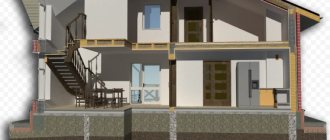Why is it necessary to register a garage as your property?
Everyone who wants to legalize their ownership of a garage pursues specific goals. The most common reasons for registering a garage as your property are as follows.
In law enforcement practice, a situation often occurs when a person inherits a garage without documents. The testator actually owned the building, but during his lifetime he did not have time to legalize the object. The only solution in this case is to go to court for recognition of ownership rights.
In the post-Soviet space, garage buildings have become one of the integral parts of the daily life of citizens.
In addition to storing a vehicle in the garage, it solves numerous everyday problems by acting as a kind of storage room. However, an object without documents cannot be the subject of any transaction: rental, sale. Therefore, it is worthwhile to legalize your property legal relationship as quickly as possible in order to protect yourself from the cunning tricks of attackers. In addition, the increased demand for legally registered garages on the market is not only stable, but also notable for its rather high prices than for garages without documents .
Another popular reason for contacting the relevant government authorities in order to properly register a garage lies in typos and errors made when drawing up documentation for the garage.
Failure to comply with the written forms of registers and forms entails the invalidity of title documents. Incorrect entry of data is considered grounds for the court to formalize a person’s ownership of a garage building.
What types of garages are there?
The procedure for registering a garage is directly related to determining its main characteristics. In addition, it is important to determine the legal status of the land plot where the building is erected.
Depending on their qualities and construction features, garages are of 3 types:
- Boxing . Such a property is included in the general structure of the building. Boxes are compartments for cars inside a building.
- Capital garage . Such an object is distinguished by the fact that it can acquire the status of both an independent building and an extension.
- Garages are metal structures . The most numerous option is not a building. There is no foundation, which makes it easy to disassemble and transport.
Does the law allow you to register an individual garage as your property?
The construction by owners of various non-residential buildings on land plots is considered commonplace. From a legal point of view, it has become possible to formalize your rights to these buildings since 2006, when the domestic legislator gave force to a regulatory legal act allowing the registration of ownership of such objects.
In common parlance, this Law is called the “dacha amnesty.”
However, it should be noted that the “dacha amnesty” will be valid until March 1, 2020.
It is during this period that the Law ceases to work. Although from 2006 until today, decisions have been made several times to extend the validity of the “dacha amnesty”.
The question arises - how to decorate a garage? Let's consider several options. In the first case, the owner of the plot builds a garage on his own land. A garage building in such a situation is subject to registration without certain legislative restrictions and bureaucratic obstacles. But the important fact is that the landowner must have all the title documents for the land . Otherwise, legalization of the garage will be impossible.
Thus, registration is preceded by the procedure for obtaining a cadastral passport of the land from the Cadastral Chamber. If the landowner has a cadastral plan (the issuance of which was discontinued on March 1, 2008), then a separate application to the Cadastral Chamber is not required. Also, according to the dacha amnesty, the presence of a land survey is not considered a prerequisite for registering property rights.
About the cost of registration
Often, future owners of non-profit real estate are interested in where to register a garage as their property.
The main answer to this question will be the cadastral office, as well as Rossreestr, each of which requires application under certain conditions. The procedure for assigning a garage and the land underneath it depends directly on the initial conditions, as well as on the location of the building. In some cases, it will not be possible to become the rightful owner even through the courts. How much it costs to register a garage as a property also depends on what kind of building is planned to be transferred to the balance of an individual.
Most often, the expense item for design activities consists of the following items:
- Ordering a technical plan, the cost of which will depend directly on the amount of labor spent on its creation. In Moscow, this service can cost from 25,000 rubles; in regional regions the price is significantly lower.
- Obtaining a real estate passport, ordering it through Rossreestr usually costs about 200 rubles.
- The fee for registering property rights, which can reach 2 thousand rubles.
Thus, the most expensive item in the design will be the work of a cadastral engineer, especially if the work is carried out from scratch. It will be possible to slightly reduce the cost of his services if you have on hand documentation for real estate from previous years.
Thus, the process of registering rights to non-commercial real estate for storing a car largely depends on the initial data and on the documentation that the potential owner has in hand.
Registration of ownership of an individual garage and land - step-by-step procedure
To legalize a garage and obtain ownership of the land plot where the building is located, the following conditions must be met:
- The date of receipt of the plot for use must be no later than October 30, 2001.
- The intended purpose of the land is private household plots, individual housing construction, gardening or the construction of garages.
- Availability of documentation that confirms the fact of provision of land on the right of lifelong ownership or ownership. The documents will be considered valid even if the specific type of right on the basis of which the land plot was obtained is not indicated.
The owner's right to land is registered in the territorial division of Rosreestr.
The following must be submitted to this body:
- Payment document confirming payment of the state duty (as of June 2020, the amount is 350 rubles).
- Cadastral plan or passport of the property.
- Documents for land. If land is provided for private household plots, instead of a certificate of title to the plot, an extract from the household register is issued.
- Personal passport.
Based on the results of the review, Rosreestr will issue a certificate of title to the land plot. After receiving this title document, legalization of the garage becomes possible. The procedure for legalizing a garage building also falls under the jurisdiction of Rosreestr.
The Rosreestr service will require the following documents:
- Document confirming payment of state duty;
- Garage declaration – in two copies;
- Passport - one copy;
- Documents for land.
Documents certifying ownership of the garage will be issued to the owner of the land plot within 10 working days.
Privatization of land under a cooperative garage
Since the land occupied by GSK may be owned by the municipality, and GSK leases the land or owns it on a permanent basis. Thus, it is obvious that since the land occupied by the cooperative is an indivisible land plot, the plot under each garage cannot be privatized into someone else's ownership. There is a way out: the owners of garages in GSK can privatize a plot of GSK land into common shared ownership.
The situation is the same with the land under apartment buildings, the owners of the apartments also own in common shared ownership.
In order to privatize the land under the GSK under such conditions, each member of the garage cooperative must have registered ownership of the garage, since only the legal owners of the buildings can register the land under the buildings as shared ownership. There is one more trick: if a plot of land was transferred to the cooperative on a permanent right of use before October 30, 2001, then the land will be transferred to the common ownership of the members of the cooperative free of charge. If later, you will have to pay the redemption price.
What are they doing to register land as shared ownership? – Members of the GSK submit a joint application to the municipal body that handles property issues. The application is submitted accompanied by documents on the legal status of the GSK, on the GSK's right to land, copies of passports of GSK members, a list of GSK members, copies of certificates of ownership for each garage.
What to do with the registration of garages in garage-building cooperatives?
Garage construction cooperatives, which are so popular in our country, issue their members with a membership book, which serves as a legal document. If a member of the GSK leaves the cooperative, he sells his share, and the new owner of the garage becomes a member of the garage association. However, this procedure for changing ownership does not comply with legal requirements.
The transaction for the alienation of the garage must be completed in compliance with all legal aspects. Otherwise, if GSK land is seized for state needs, then there is no point in counting on compensation for owners without documents.
Registration of ownership of a garage building in a garage-building cooperative requires the following documents:
- Applicant's passport.
- Receipt for payment of state duty.
- Cadastral passport of the cooperative garage.
- A certificate confirming the person’s membership in the GSK.
- A certificate stating that the share contributions have been paid in full (this certificate will have legal force if it bears the signature of the chief accountant or chairman of the cooperative).
However, there are cases when all the shareholders have not paid their full contributions, and, therefore, ownership rights have not been registered for any garage.
When registering rights in this case, an additional package of documents will be required.
The additional package of documents consists of:
- Charter of the cooperative;
- Certificate of the cooperative's right to land;
- Certificate of state registration of the cooperative;
- List of cooperative members;
- An extract from the minutes of the general meeting of the cooperative on the election of the chairman, as well as an order on the appointment of the chief accountant.
The procedure for registering ownership of cooperative garages
The procedure for registering a cooperative garage includes the following stages:
- First, the person must contact the chairman of the cooperative and obtain the relevant documents necessary for registration.
- Then, you should order the drawing up of a technical plan for the garage from a cadastral engineer.
- After this, cadastral registration is carried out at the Cadastral Chamber on the basis of the technical plan and package of documents.
IMPORTANT! Registration will be difficult if the garage has common walls with adjacent buildings and is part of a line of garages. Such a garage does not have the status of an independent building, but is considered a room in a line of garages. Therefore, in order to register one garage with the cadastral authority, the entire line of garages must be registered as a whole building. The document confirming registration is a cadastral passport.
- The final stage is an application to Rosreestr to register property rights. When contacting Rosreestr, you will need to write an application in the prescribed form and attach documents to it. During the period for consideration of the application, the garage owner will be issued a title document for the garage box.
Procedure for the registration procedure
Where to begin:
- Coordination with the authorities of future construction.
- Construction (according to the schedule specified in the agreed project documents).
- Obtaining a certificate indicating permission to put into operation.
- Documents for registration of ownership.
If the garage is built without obtaining permits or without a design
An owner without documents faces a more difficult procedure. To obtain property rights from administrative authorities, you must prepare an impressive package of documents. It is often easier to go to court, but this method will be more expensive.
Obtaining permission from local authorities before installation work
The most optimal and reliable way to register ownership. To speed up the process, you can resort to the simplified procedure for obtaining certificates introduced in 2006.
A prerequisite for using this method is that the new object has the status of an auxiliary building. That is, the new building must be an addition, which is aimed at servicing the main building.
What about unauthorized garages?
We discussed above situations when the owner of a legally constructed facility does not have title documents.
But what about unauthorized garage buildings? There are often cases when a plot of land is not used for its intended purpose and a garage is built on land not intended for this purpose. Or a completely different situation, when a person builds a garage on a plot that does not belong to him. Registration of such unauthorized buildings causes certain difficulties. Law enforcement practice has found two ways to register an illegally built garage as property:
- Judicial order. It is necessary to apply to the court for recognition of the right to unauthorized construction.
- An extrajudicial procedure, according to which the city commission for the suppression of unauthorized buildings, on the basis of a person’s application to preserve a garage, legalizes the right to a garage.
In order for the above procedures to be carried out properly, the person must provide evidence that the garage was built by him. Contracts concluded with contractors may be presented as evidence. In addition, the garage building must meet fire and sanitary requirements.
It is possible to legalize an unauthorized construction only if there are no claims of other persons to the object. If there is a dispute about the owner of an illegally built garage, then it is not possible to register such an object. In any case, land with the appropriate purpose must be used to build a garage. If the category of a land plot does not correspond to its actual use, then it will not be possible to register rights to an object on such land.
The video story will tell you where to start when registering a garage as your property.
Privatization of a garage plot from GSK
According to the Land Code of the Russian Federation, the owner of a premises, structure, structure (a garage is equated to these) has the right to privatize the territory occupied by the structure. In paragraph 1 of Art. 39.2 of the Land Code of the Russian Federation describes that persons who own buildings on municipal or state territories can acquire such territories as their property.
It is also necessary to emphasize the definition of “premises, structure, structure” and determine the compliance of the property with the documents. A garage is understood as a separate building with a foundation and a driveway. If it is located in a box, shares walls or foundations with other buildings, it turns into the property of GSK, and, therefore, privatization is impossible.
Co-op garage
As a result, the owner of such a building can only buy a share (share) in the common property of the GSK territory. You will have to wait until all shareholders confirm ownership. Only after this can you register a specific piece of territory as a property. It is recommended to call on the GSK management for help. It will notify all participants that the collection of data for registration of property rights has begun and will help in the organizational process. After collecting all the information, a joint application is sent to the local government authorities. The application is signed by all members of the cooperative, and copies of the mentioned documents (required for the application) are attached to it.









